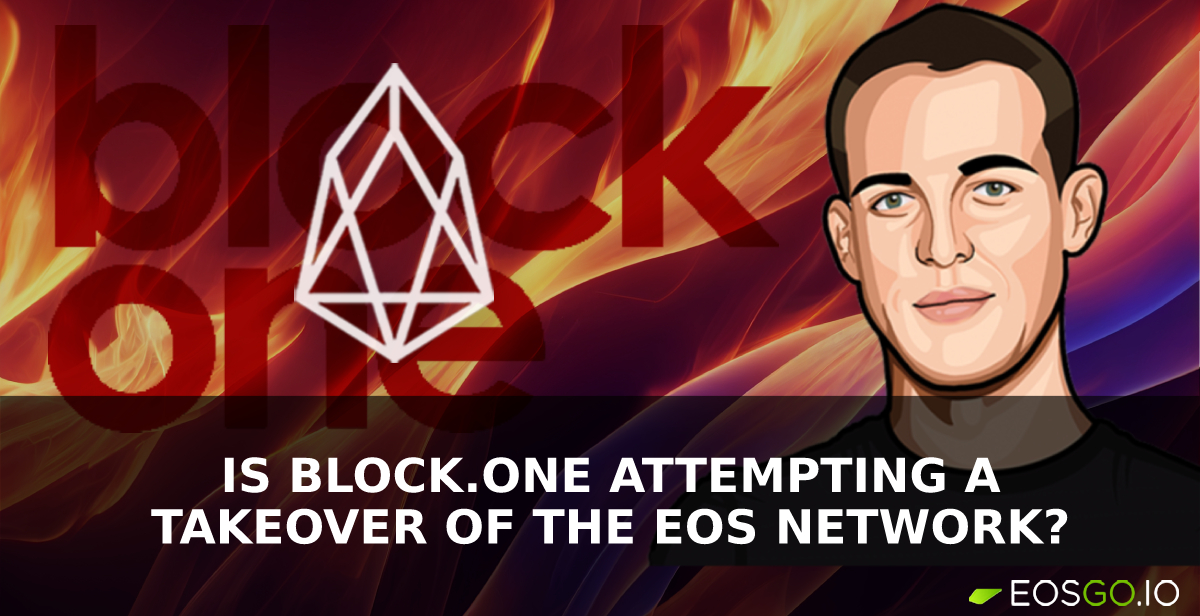Collusion, Vote Buying and Chinese Dominance: Is EOS Governance Broken?

EOS governance has been subject to scrutiny ever since its published whitepaper revealed that the EOS blockchain would adopt a new consensus mechanism that utilizes 21 Block Producers (BPs) to validate transactions on its blockchain. The idea of having a limited set of block producing nodes had many people in the industry arguing that this consensus mechanism is centralized by design.
The Delegated Proof of Stake (DPoS) consensus mechanism introduced a democratic process to block production and validation. With this consensus mechanism, token holders would vote and elect the top 21 Block Producers they thought were the most capable to validate blockchain transactions and secure the network. Other block producers would be on standby ready to replace whichever BPs that lost voter support from EOS token holders.
The idea was that this would create competition among block producers and lead to them creating more value for token holders in order to get their vote. This governance model would then create a virtuous cycle that benefits all EOS stakeholders. However, reality hasn’t played out exactly as planned. Since EOS’ launch in June 2018, its governance process has been faced with ongoing controversy.
Controversies
Chinese dominance over EOS governance
In 2019 one of the biggest criticisms of EOS governance was that it was dominated by Chinese BPs. At one point there were 8 Chinese block producers in the top 21, which represented 38% of all block producing nodes. This was also during the time when China began its clamp down on cryptocurrencies.
Critics claimed that China’s stance on cryptocurrencies places a greater threat for a blockchain like EOS. Their argument was that the Chinese government could shut down the servers of Chinese block producers, resulting in severe security breaches on the network. Or even worse that the “tyrannical” Chinese government could forcefully take over the operations of Chinese BPs and use them to control and surveil the EOS network.
Collusion
Collusion of Block Producers still remains critics’ biggest reservation regarding EOS governance. The theory is that multiple BPs could collude to vote for themselves into top positions thus undermining EOS’ democratic governance process. Legitimate and favored BPs by the masses could then easily be kept out the top 21 as the colluding interests could collectively hold a greater amount of EOS tokens. This would result in a situation where a Mafia like organization runs the EOS blockchain.
Similarly, there was huge controversy in 2019 surrounding certain block producers creating multiple EOS BP accounts and voting them into paid positions to receive network rewards. A single BP would create multiple sockpuppet accounts to earn hundreds of dollars everyday from each account. This robbed legitimate BPs that create actual value for the network of getting into paid positions.
Vote buying
Heading into 2020 the biggest scandal was vote buying; BPs incentivizing token holders to vote for them in exchange for a share of the EOS rewards that a BP would get from being in a paid position. To many, especially to outsiders, this vote buying represented EOS’ failure in being a democratically governed network.
However, most EOS stakeholders came to the conclusion that if everyone is doing it then it balances out. Some even concluded that in fact reward sharing is a BPs way of providing more value to the token holder. Just as long as the BPs maintain a high quality standard in their roles as block producers.
Exchanges as block producers
For the past 2-3 years centralized exchange (CEX) BPs have drawn multiple criticism regarding their role in the EOS network. Many token holders feel that exchange CEX block producers don’t contribute as much as they should to the growth and success of the EOS ecosystem. Other block producers have also voiced their concerns on how CEX block producers utilize user deposited funds to vote themselves into paying positions.
Then there’s the discussion on why the centralized exchanges that are collecting EOS rewards have failed to list other tokens in its ecosystem. The general consensus is that these centralized exchanges are as invested in the future and success of the EOS network. And the counter from the centralized exchanges has been that there are protocols they need to follow before listing any token.
Is EOS governance effective?
Despite all the controversies and scandals that EOS governance has faced over the years, it has recently begun to win back the faith of EOS stakeholders, and the wider blockchain industry. The renewed faith came when the Block Producers voted in favor of the establishment and funding of an EOS foundation that would represent the interests of all EOS stakeholders, including block producers.
This introduced a central entity, the EOS Network Foundation (ENF), as an alternative to Block.one, that would operate to the benefit of the EOS network. Later, block producers would, once again, act in alignment with the EOS community by voting to halt payments to Block.one due to the company’s failure to support the EOS ecosystem and maintain the underlying protocol’s (EOSIO) codebase.
In the past there are also several instances where Block Producers have played their role exceptionally when it came to ensuring the network’s security, immutability, and censorship resistance. For instance, BPs have had to upgrade their infrastructures to more modern and expensive equipment in order to ensure that they continue to operate at industry-leading standards along with the EOS network.
In other instances, the block producers maintained EOS’ censorship resistance by allowing EIDOS, an airdrop that consumed most of the network’s resources, to continue to operate. This caused the network to practically come to a halt as regular users couldn’t conduct any transactions due to the network being filled to its limit. However, despite pressure from the EOS community, and other pressures from the wider blockchain community, BPs refused to undermine EOS’ censorship resistance.
To conclude,
The EOS network is witnessing an ever increasing optimism about its future where all the different players in its ecosystem work together towards its success. Whether this will prove EOS’ governance model to be a success is yet to be seen, but until then it will continue to be challenged until it is as effective as it can be.
I can state with certain confidence that past challenges the network has faced in the past has made EOS a more effective and versatile network that’s able to make decisions and implement them much quicker than on other blockchain networks. However, challenges still remain and DPoS on EOS will have to overcome them over and over again in order to prove itself as a viable governance model in the long term.
Ultimately, the effectiveness of EOS governance will remain a topic of ongoing discussion and analysis, and opinions will vary depending on individual perspectives and experiences.
Suggested News
Is Block.one Attempting A Takeover Of The EOS Network?
*__Article submitted by WhiteKnight__* Block.one, the corporate giant that was kicked out of the EOS network by the cu...
VOICE Beta limited to the USA
The voice team has announced that the beta coming on February 14 will be limited only to the United States. According t...

